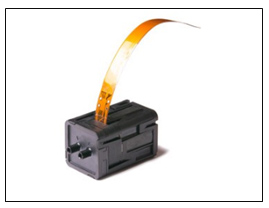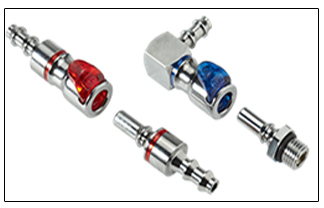The 3 most common traps of fluidic system design and how to avoid them
2/07/2018 4:30 pm
Whether you’re an industrial designer or a project engineer, planning out the design of a fluidic system is a complex process.
While a product feature may seem appealing for one application, the same feature could be equally problematic when being applied to another system – even if the component modifications are only minor.
Therefore, it is critical to consider all possible and potential operational scenarios before finalising the components of your system.
The additional investment required at the design phase may make it feel as though your project has a higher risk of exceeding time and budget constraints. But this is rarely, if ever, the case. Additional design time is a small price to pay when the total project build is being considered.
And there are common traps that designers fall into when trying to cut corners in the initial design of fluidic system projects. So, what are they?
The 3 most common setbacks in fluidic system design
Trap 1: the tendency to “redesign the wheel”
We see this happen all too often, wherein a designer develops a fluidic component for a system from scratch, without realising that an existing product may already be available.
For critical applications, developing a fit-for-purpose product requires extensive prototyping, which is a very time consuming and costly process. Prototyping even the simplest products can take a few weeks to a couple of months – a difficult concept to explain to a client who might be paying you by the hour if the solution already exists.
If you’re not up to date with new products and advances in technology, you run the risk of investing your valuable time developing a product that’s already on the market and could be suitable for your application.
And what’s worse? All that time and money spent on prototyping a system that already exists could have been more productively invested testing the product with the ultimate stakeholders: the customers.
Trap 2: Deferring prototype and sample purchases to save costs
When designing a system, wasted time is wasted money. Time spent deliberating over the price of a product is the most expensive time you will ever waste.
What poses a unique challenge for Australian designers is that most leading fluidics manufacturers are based in Europe and North America.
Essentially, this means domestic industrial designers need to contend with lengthy import times, delays, and compounded freight costs, when all you require is a small product quantity to prove a concept.
Working with a reliable supplier who not only stocks inventory for prototyping, but also has regular shipments from the major manufacturing locations can significantly reduce the time and freight costs associated with prototyping.
Trap 3: Not seeing the forest for the trees – focusing on details when results will suffice
Another set-back commonly faced at the design phase relates to the immense amount of time and effort spent carefully selecting the components for a system – but long lead times for non-critical components means the final product inevitably incurs significant delays.
Working with your supplier to identify what products with similar performance characteristics are available ex-stock, and or with short lead time, can reduce your development time dramatically.
For example, your system may have specified a threaded port for the chosen valve, but the lead time for that component is four weeks. In this instance, it’s quite possible to use an equivalent barbed port (which is in stock) to prove the concept and move on to the next design phase.
How to avoid falling into these traps
With so many process complexities and product intricacies to consider, designers and engineers need to have tactics set in place to ensure they can avoid these traps. That’s why we’ve outlined some key tips to help you stick to your budget and projects timelines:
Engage a supplier with extensive knowledge of existing fluid system designs
Utilising an experienced supplier means you won’t have to waste time prototyping a design that already exists. Instead, you can better utilise your time and your client’s budget on the actual implementation phase of the fluidic system.
Not only this, but having a trusted specialist available to discuss your application can significantly reduce the prototyping period due to their ability to draw on past knowledge of component capabilities.
Stay on top of new products in the fluidic system design space
In order to design an effective fluidic system, it is essential for designers and engineers to stay informed of the latest product innovations and developments. Without having knowledge of new technologies and products, you may be inadvertently designing something which is destined to be ‘old technology’ before it’s even released.
Having access to innovative manufacturers such as Parker Hannifin, CPC, Biochem Fluidics, and Clippard Instrument Laboratory is a good way to stay abreast of new products in the fluid control industry. And when this is coupled with expert advice, you can ensure your system will be one of the best in the business.
Appoint a local supplier who sources their products from high quality domestic and international manufacturers
Having a locally based supplier guarantees you’ll be able to access leading brands without having to incur exorbitant shipping costs and extensive time delays.
Domestic suppliers can also provide immediate access to product samples and additional specifications required before and after installation.
Xavitech’s Intelligent Pumps and CPC Quick Disconnects are key product ranges that VFV keeps on hand for immediate sampling purposes.
Reduce your project costs by simplifying the design process
At VFV, we’re constantly looking for areas to add value to our customer’s design process, and ensure you don’t blow out your project budget and timelines.
Our specialists attend trade shows all over the world to identify new product innovations which can be applied to the Australian market, and help you determine the most suitable components for your project.
Ask yourself this: do you want access to the world’s leading fluidics instruments? Do you want expert advice on how to select the best possible components? Do you want to ensure all of your future projects are completed on time and within budget?
Then contact us today to discuss how we can help you simplify the design process of your fluidic system. Or if you’ve already implemented a system, let us know how we can support you to streamline your processes even further.
We also provide samples of our fluidic instrumentation products to help you understand how they can be applied to a specific process. If this sounds like something you’d like to see in your own project, give me a call today on +61 3 9873 1400.
Jonathan Barlow
You must be logged in to post a comment.
click here to log in


